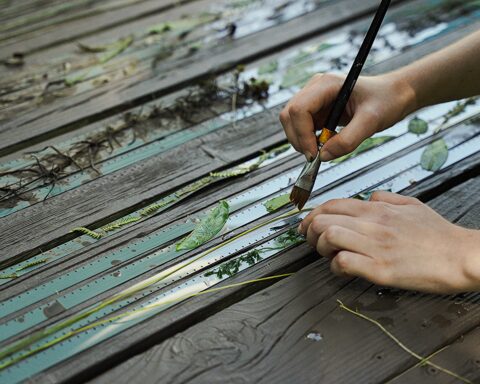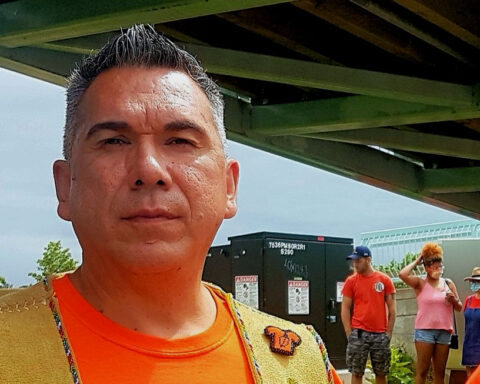Many immigrant women who are experiencing domestic violence require culturally sensitive support services. A new project on Canada’s east coast aims to ensure these types of services are made available.
The New Brunswick Multicultural Council (NBMC) received almost $230,000 in funding from Status of Women Canada to create projects to ensure local domestic and family violence service providers, as well as settlement service providers, are adequately equipped to support immigrant women experiencing violence at home.
“We don’t know that the rates are different amongst immigrant women, but what we do know is that even though it’s difficult for everybody to disclose and seek help, we want to make it as easy as possible when they do,” says Dr. Catherine Holtmann, director of the Muriel McQueen Fergusson Centre for Family Violence Research (MMFC), one of the project’s partners. “We’ll respond in ways that are appropriate and help them to stop the violence in their lives.”
“One woman may not be able to access [services] because of the linguistic barrier, another one may be frustrated for not being culturally understood.”
Alex LeBlanc, managing director of the NBMC, says settlement service providers currently lack expertise in addressing intimate partner violence while domestic, intimate and family violence service providers lack capacity in terms of cross cultural contexts.
“It speaks to a lack of capacity on both sides of the fence. We want to figure out what the needs are and how to address them in a more coordinated way,” explains LeBlanc.
Barriers for immigrant women
Reflecting on her own background entering Canada as a refugee, Hyasinter Rugoro, one of the project’s research co-chairs, says there are many possible structural barriers that may impact an immigrant woman’s ability to access services.
“One woman may not be able to access [services] because of the linguistic barrier, another one may be frustrated for not being culturally understood when they are trying to access the services or it could be somebody not understanding that they exist,” Rugoro explains.
Rugoro, who will be volunteering her time along with fellow immigrant and co-chair Dr. Maria Costanza Torri over the three-year duration of the project, recalls being new to Canada and being directed to prenatal classes, along with other services, of which she had no prior knowledge.
“There could be someone or some people that could be left into loneliness and confinement, not knowing where to go or what to ask for.”
Helen Lanthier was a project co-coordinator of Be the Peace, a similar initiative in Nova Scotia.
Also funded by Status of Women Canada for three years, Be the Peace was a coordinated community response to violence against women and girls, including sexual assault in rural communities. Thanks to this project, Nova Scotia’s South Shore area now has sexual assault services.
“Stereotypes are destructive and discrimination can happen because of [them].”
Lanthier says having the focus on immigrant women presents unique challenges due to the damaging impacts of societal stereotypes.
“Stereotypes are destructive and discrimination can happen because of [them],” Lanthier states, pointing to the recent niqab debate during the federal election as an example of this.
Lanthier’s counterpart says there might be some similarities between their project’s considerations of rural women and the NBMC project’s focus on immigrant women.
“I think there’s a lot of overlap. Probably one of the biggest barriers is isolation,” says Sue Bookchin, co-coordinator for Be the Peace.
Bookchin speaks of rural isolation partially being present by lack of transportation, and social isolation by not being part of the dominant culture.
She says sensitivities, perceptual obstacles, fears and shame may hinder immigrant women from coming forward to access services and that attracting them to conversations might be more challenging.
Protecting confidentiality
The NBMC’s initiative is set up to pilot in four different communities in New Brunswick, both English and French, rural and urban: Saint John, Moncton, Bathurst and St. Stephen.
There will be various stages to the project including: assessing the community’s needs, exploring partnerships and collaborations, knowledge sharing and eventually an evaluation.
“[W]e are really trying to understand the level of what the immigrant women know about domestic violence.”
Like Bookchin, LeBlanc anticipates challenges in getting women to come out and share their experiences.
LeBlanc is concerned branding the project under the label of domestic violence might turn people away or make those who do come forward more vulnerable. But according to Holtmann, even though this project isn’t research, the needs assessments will abide by university ethical principals.
“We will ensure their confidentiality … the results of the needs assessment will not refer to any individual in any way that they could be identified.”
As well, because this project is about hearing what immigrant women, along with service providers, have to say, transportation, childcare and whatever else is necessary to make sure interested women can take part will be made available.
“We all come from different backgrounds and cultures and beliefs and my definition of domestic violence could be different from somebody else’s,” says Rugoro. “So we are really trying to understand the level of what the immigrant women know about domestic violence.”




